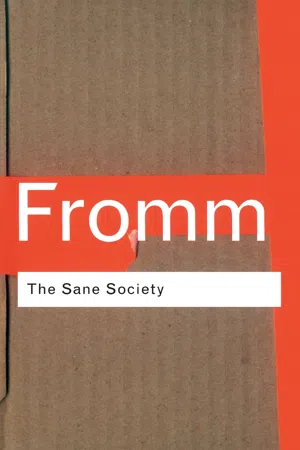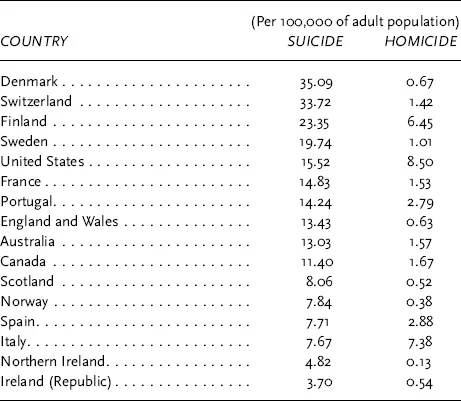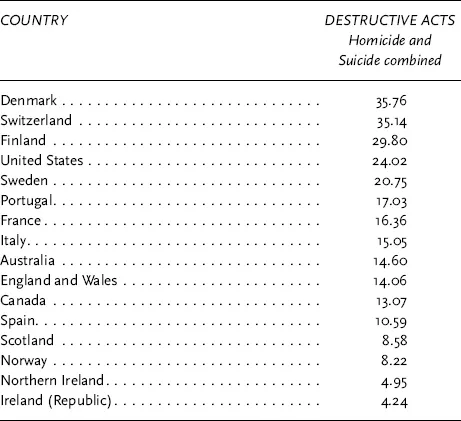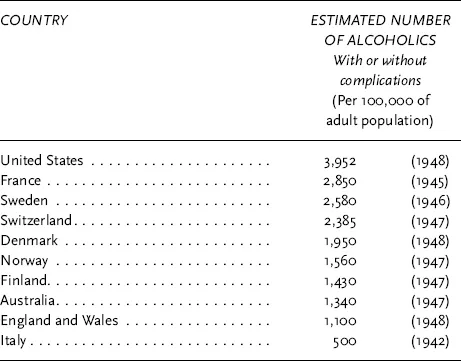
eBook - ePub
The Sane Society
Erich Fromm, Leonard A. Anderson
This is a test
Share book
- 424 pages
- English
- ePUB (mobile friendly)
- Available on iOS & Android
eBook - ePub
The Sane Society
Erich Fromm, Leonard A. Anderson
Book details
Book preview
Table of contents
Citations
About This Book
Following the publication of the seminal Fear of Freedom, Erich Fromm applied his unique vision to a critique of contemporary capitalism in The Sane Society. Where the former dealt with man's historic inability to come to terms with his sense of isolation, and the dangers to which this can lead, The Sane Society took his theories one step further.
Frequently asked questions
How do I cancel my subscription?
Can/how do I download books?
At the moment all of our mobile-responsive ePub books are available to download via the app. Most of our PDFs are also available to download and we're working on making the final remaining ones downloadable now. Learn more here.
What is the difference between the pricing plans?
Both plans give you full access to the library and all of Perlego’s features. The only differences are the price and subscription period: With the annual plan you’ll save around 30% compared to 12 months on the monthly plan.
What is Perlego?
We are an online textbook subscription service, where you can get access to an entire online library for less than the price of a single book per month. With over 1 million books across 1000+ topics, we’ve got you covered! Learn more here.
Do you support text-to-speech?
Look out for the read-aloud symbol on your next book to see if you can listen to it. The read-aloud tool reads text aloud for you, highlighting the text as it is being read. You can pause it, speed it up and slow it down. Learn more here.
Is The Sane Society an online PDF/ePUB?
Yes, you can access The Sane Society by Erich Fromm, Leonard A. Anderson in PDF and/or ePUB format, as well as other popular books in Sciences sociales & Sociologie. We have over one million books available in our catalogue for you to explore.
Information
1
Are we Sane?
Nothing is more common than the idea that we, the people living in the Western world of the twentieth century, are eminently sane. Even the fact that a great number of individuals in our midst suffer from more or less severe forms of mental illness produces little doubt with respect to the general standard of our mental health. We are sure that by introducing better methods of mental hygiene we shall improve still further the state of our mental health, and as far as individual mental disturbances are concerned, we look at them as strictly individual incidents, perhaps with some amazement that so many of these incidents should occur in a culture which is supposedly so sane.
Can we be so sure that we are not deceiving ourselves? Many an inmate of an insane asylum is convinced that everybody else is crazy, except himself. Many a severe neurotic believes that his compulsive rituals or his hysterical outbursts are normal reactions to somewhat abnormal circumstances. What about ourselves?
Let us, in good psychiatric fashion, look at the facts. In the last one hundred years we, in the Western world, have created a greater material wealth than any other society in the history of the human race. Yet we have managed to kill off millions of our population in an arrangement which we call “war.” Aside from smaller wars, we had larger ones in 1870, 1914 and 1939. During these wars, every participant firmly believed that he was fighting in his self-defense, for his honor, or that he was backed up by God. The groups with whom one is at war are, often from one day to the next, looked upon as cruel, irrational fiends, whom one must defeat to save the world from evil. But a few years after the mutual slaughter is over, the enemies of yesterday are our friends, the friends of yesterday our enemies, and again in full seriousness we begin to paint them with appropriate colors of black and white. At this moment, in the year 1955, we are prepared for a mass slaughter which would, if it came to pass, surpass any slaughter the human race has arranged so far. One of the greatest discoveries in the field of natural science is prepared for this purpose. Everybody is looking with a mixture of confidence and apprehension to the “statesmen” of the various peoples, ready to heap all praise on them if they “succeed in avoiding a war,” and ignoring the fact that it is only these very statesmen who ever cause a war, usually not even through their bad intentions, but by their unreasonable mismanagement of the affairs entrusted to them.
In these outbursts of destructiveness and paranoid suspicion, however, we are not behaving differently from what the civilized part of mankind has done in the last three thousand years of history. According to Victor Cherbulliez, from 1500 B.C. to 1860 A.D. no less than about eight thousand peace treaties were signed, each one supposed to secure permanent peace, and each one lasting on an average two years!1
Our direction of economic affairs is scarcely more encouraging. We live in an economic system in which a particularly good crop is often an economic disaster, and we restrict some of our agricultural productivity in order to “stabilize the market,” although there are millions of people who do not have the very things we restrict, and who need them badly. Right now our economic system is functioning very well, because, among other reasons, we spend billions of dollars per year to produce armaments. Economists look with some apprehension to the time when we stop producing armaments, and the idea that the state should produce houses and other useful and needed things instead of weapons, easily provokes accusations of endangering freedom and individual initiative.
We have a literacy above 90 per cent of the population. We have radio, television, movies, a newspaper a day for everybody. But instead of giving us the best of past and present literature and music, these media of communication, supplemented by advertising, fill the minds of men with the cheapest trash, lacking in any sense of reality, with sadistic phantasies which a halfway cultured person would be embarrassed to entertain even once in a while. But while the mind of everybody, young and old, is thus poisoned, we go on blissfully to see to it that no “immorality” occurs on the screen. Any suggestion that the government should finance the production of movies and radio programs which would enlighten and improve the minds of our people would be met again with indignation and accusations in the name of freedom and idealism.
We have reduced the average working hours to about half what they were one hundred years ago. We today have more free time available than our forefathers dared to dream of. But what has happened? We do not know how to use the newly gained free time; we try to kill the time we have saved, and are glad when another day is over.
Why should I continue with a picture which is known to everybody? Certainly, if an individual acted in this fashion, serious doubts would be raised as to his sanity; should he, however, claim that there is nothing wrong, and that he is acting perfectly reasonably, then the diagnosis would not even be doubtful any more.
Yet many psychiatrists and psychologists refuse to entertain the idea that society as a whole may be lacking in sanity. They hold that the problem of mental health in a society is only that of the number of “unadjusted” individuals, and not that of a possible unadjustment of the culture itself. This book deals with the latter problem; not with individual pathology, but with the pathology of normalcy, particularly with the pathology of contemporary Western society. But before entering into the intricate discussion of the concept of social pathology, let us look at some data, revealing and suggestive in themselves, which make reference to the incidence of individual pathology in Western culture.
What is the incidence of mental illness in the various countries of the Western world? It is a most amazing fact that there are no data which answer this question. While there are exact comparative statistical data on material resources, employment, birth and death rates, there is no adequate information about mental illness. At the most we have some exact data for a number of countries, like the United States and Sweden, but they only refer to admissions of patients to mental institutions, and they are not helpful in making estimates of comparative frequency of mental illness. These figures tell us just as much about improved psychiatric care and institutional facilities as they tell us about increase in incidence of mental illness.2 The fact that more than half of all hospital beds in the United States are used for mental patients on whom we spend an annual sum of over a billion dollars may not be an indication of any increase in mental illness, but only of an increasing care. Some other figures, however, are more indicative of the occurrence of the more severe mental disturbances. If 17.7 per cent of all rejections of draftees in the last war were for reasons of mental illness, this fact certainly bespeaks a high degree of mental disturbance, even if we have no comparative figures referring to the past, or to other countries.
The only comparative data which can give us a rough indication of mental health, are those for suicide, homicide and alcoholism. No doubt the problem of suicide is a most complex one, and no single factor can be assumed to be the cause. But even without entering at this point into a discussion of suicide, I consider it a safe assumption that a high suicide rate in a given population is expressive of a lack of mental stability and mental health. That it is not a consequence of material poverty is clearly evidenced by all figures. The poorest countries have the lowest incidence of suicide, and the increasing material prosperity in Europe was accompanied by an increasing number of suicides.3 As to alcoholism, there is no doubt that it, too, is a symptom of mental and emotional instability.
The motives for homicide are probably less indicative of pathology than those for suicide. However, though countries with a high homicide rate show a low suicide rate, their combined rates bring us to an interesting conclusion. If we classify both homicide and suicide as “destructive acts,” our tables demonstrate that their combined rate is not constant, but fluctuating between the extremes of 35.76 and 4.24. This contradicts Freud’s assumption of the comparative constancy of destructiveness which underlies his theory of the death instinct. It disproves the implication that destructiveness maintains an invariable rate, differing only in directions toward the self or the outside world.
The following tables show the incidence of suicide, homicide and alcoholism for some of the most important European and North American countries.
A quick glance at these tables shows a remarkable phenomenon: Denmark, Switzerland, Finland, Sweden and the United States are the countries with the highest suicide rate, and the highest combined suicide and homicide rate, while Spain, Italy, Northern Ireland and the Republic of Ireland are those with the lowest suicide and homicide rate. The figures for alcoholism show that the same countries—the United States, Switzerland, Sweden and Denmark—which have the highest suicide rate, have also the highest alcoholism rate, with the main difference that the United States are leading in this group, and that France has the second place, instead of the sixth place it has with regard to suicide.
Table I4

Table II

(Both the above tables show the figures for 1946)
These figures are startling and challenging indeed. Even if we should doubt whether the high frequency of suicide alone indicates a lack of mental health in a population, the fact that suicide and alcoholism figures largely coincide, seems to make it plain that we deal here with symptoms of mental unbalance.
Table III

We find then that the countries in Europe which are among the most democratic, peaceful and prosperous ones, and the United States, the most prosperous country in the world, show the most severe symptoms of mental disturbance. The aim of the whole socio-economic development of the Western world is that of the materially comfortable life, relatively equal distribution of wealth, stable democracy and peace, and the very countries which have come closest to this aim show the most severe signs of mental unbalance! It is true that these figures in themselves do not prove anything, but at least they are startling. Even before we enter into a more thorough discussion of the whole problem, these data raise a question as to whether there is not something fundamentally wrong with our way of life and with the aims toward which we are striving.
Could it be that the middle-class life of prosperity, while satisfying our material needs leaves us with a feeling of intense boredom, and that suicide and alcoholism are pathological ways of escape from this boredom? Could it be that these figures are a drastic illustration for the truth of the statement that “man lives not by bread alone,” and that they show that modern civilization fails to satisfy profound needs in man? If so, what are these needs?
The following chapters are an attempt to answer this question, and to arrive at a critical evaluation of the effect contemporary Western culture has on the mental health and sanity of the people living under our system. However, before we enter into the specific discussion of these questions, it seems that we should take up the general problem of the pathology of normalcy, which is the premise underlying the whole trend of thought expressed in this book.
1 From H. B. Stevens, The Recovery of Culture, Harper and Brothers, New York, 1949, p. 221.
2 cf. H. Goldhamer and A. Marshall, Psychosis and Civilization, Free Press, Glencoe, 1953.
3 cf. Maurice Halbwachs, Les Causes du Suicide, Félix Alcan, Paris, 1930, pp. 109 and 112.
4 The information in the first and second tables is derived from 1. World Health Organization (1951) Annual epidemiological and vital statistics, 1939–46. Part I. Vital statistics and causes of death, Geneva, pp. 38–71 (the figures from this source have been converted for greater accuracy from total to adult population), and 2. World Health Organization (1952) Epidem. vital Statist. Rep. 5, 377. That of the third table, from the Report on the First Session of the Alcoholism Subcommittee, of the Expert Committee on Mental Health, World Health Organization, Geneva, 1951.
2
Can a Society be Sick?—The Pathology of Normalcy1
To speak of a whole society as lacking in mental health implies a controversial assumption contrary to the position of sociological relativism held by most social scientists today. They postulate that each society is normal inasmuch as it functions, and that pathology can be defined only in terms of the individual’s lack of adjustment to the ways of life in his society.
To speak of a “sane society” implies a premise different from sociological relativism. It makes sense only if we assume that there can be a society which is not sane, and this assumption, in turn, implies that there are universal criteria for mental health which are valid for the human race as such, and according to which the state of health of each society can be judged. This position of normative humanism is based on a few fundamental premises.
The species “man,” can be defined not only in anatomical and physiological terms; its members share basic psychic qualities, the laws which govern their mental and emotional functioning, and the aims for a satisfactory solution of the problem of human existence. It is true...